|
Size: 3472
Comment:
|
Size: 6009
Comment:
|
| Deletions are marked like this. | Additions are marked like this. |
| Line 77: | Line 77: |
| Here the Uranus map at 2mm integrated on few scans at high elevation. We see two lobes of unknown origin but seen also by XPol. On the bottom the map at low elevation, the angle of polarization rotate, as expected if due to the instrumental polarisation. Xpol observed this effect at about 1% level. They explain this as an effect of the mirrors inside the cabin. This could explain why we observed the same behaviour even if not exactly at the same level. Another possible explanation could be the corrugated lenses in the cryostat. We need a detailed discussion on this subject in particular for NIKA2. '''2mm Channel''' {{attachment:Uranus2lobes.png||width=800}} {{attachment:Uranus2lobes_low.png||width=800}} |
|
| Line 83: | Line 95: |
| 10h. Vincent leaved, Anael arrived. |
|
| Line 85: | Line 100: |
| We applied a first quick calibration (opacity correction is done) | This map is produced using 11 scan 8 X 6 arcmin. We applied a first quick calibration (opacity correction is done - at 1mm channel it goes from 0.3 to 0.15) |
| Line 95: | Line 110: |
Slightly improved processing (still preliminary !) '''1mm Channel''' {{attachment:Crab_2nd_iteration_1mm.png||width=1200}} '''2mm Channel''' {{attachment:Crab_2nd_iteration_2mm.png||width=1200}} == February 14th 2015 == Observations as planned. Orion, CigA, Crab and several Quasars. '''FIRST DETECTION OF THE CygnusA POLARISATION AT 1MM AND 2MM!!!''' {{attachment:CygnusA.png||width=1000}} == February 15th 2015 == No observation because of the snow. == February 16th 2015 == Calibration done! {{attachment:photometry.png||width=1000}} Observations of Uranus during the observing campaign. The range of variation of the opacity is big (for 1mm from 0.2 to 0.9). Horizontal lines correspond to mean(flux)+1*sigma and mean(flux)-1*sigma with: sigma_1mm=8.1% sigma_2mm=4.5% 00h. We should start observations now, but we decided to give 2 hours to XPOL to be able to cross-calibrate polarisation. 02h. Start Wollaston prism session. We planned to do a three hours session observing quasars and M87. 05h15m: we observe M87 with the polariser and few quasars for calibration until the end of the session. 11h30m. One hounr and half bonus to observe mars at different elevation. 17h. One more hour to have Orion observation at different elevation. We got just one Orion map because a technical problem on acquisition appeared. == February 16th 2015 == We started at 01h. Observations of NGC2264C, M87 and few quasars. 05h. '''OBSERVING CAMPAIGN ENDED. WE GOT POLARISATION WITH NIKA!!!''' == February 17th 2015 == '''BYE BYE NIKA-1''' {{attachment:byebye.png||width=1000}} |
Contents
February 09th 2015
10h. The first part of the NIKA Polar Team arrived: Andrea, Alessia, Nicolas.
12h. Helping the open pool team to make observations.
February 10th 2015
10h. The rest of the NIKA polar team arrived: Vincent and Philippe.
11h. mppsync does not work with the current version of the acquisition. We update the version 6470 only on the mppsync instrument and everything started to work.
13h. Polariser, HWP and WG put into the beam at the nominal position.
14h. We performed several tests to check the best configuration of the polariser. The question was: is it really necessary to put an aluminum plate in order to mask all the mechanical parts which turns in front of the cryostat? If we do this, we must recule the WG by 1-1.5 cm in the direction of the cryostat window running the risk to loose some sky photons.
In the following plot some results of our tests (the background is 300K, the mechanical rotation is 3Hz):
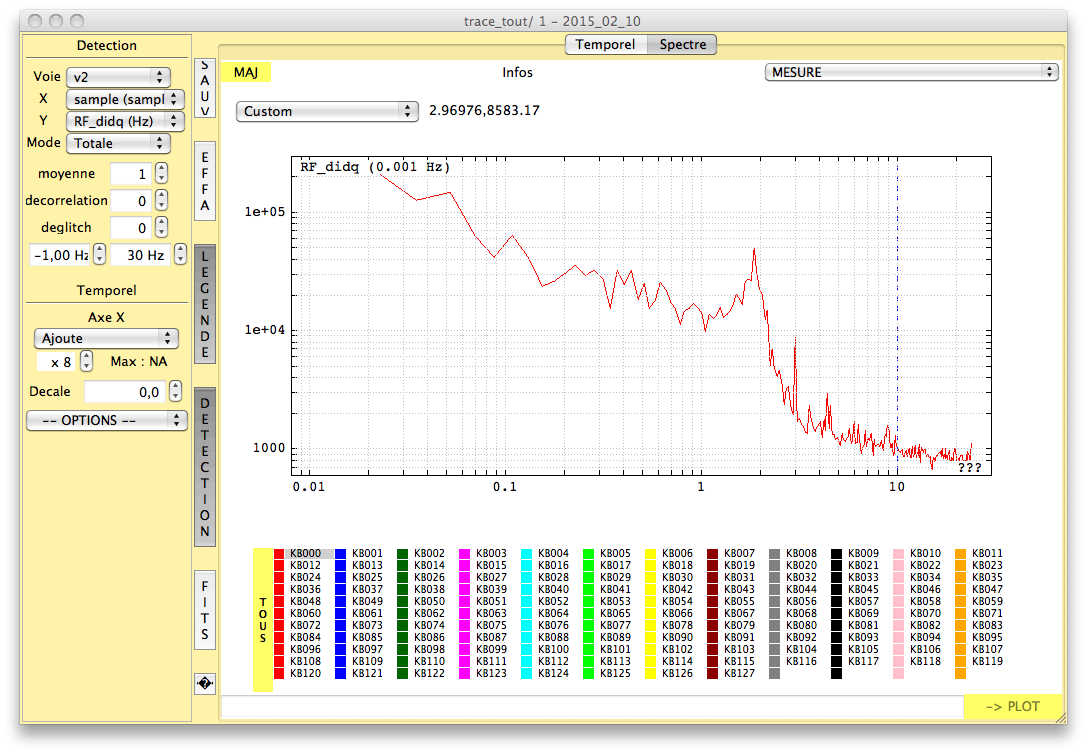
Spectrum of the signal with aluminum foils closing the window (we want to test if any armonics can be in the signal by magnetics, electrical or vibration spurious signals.
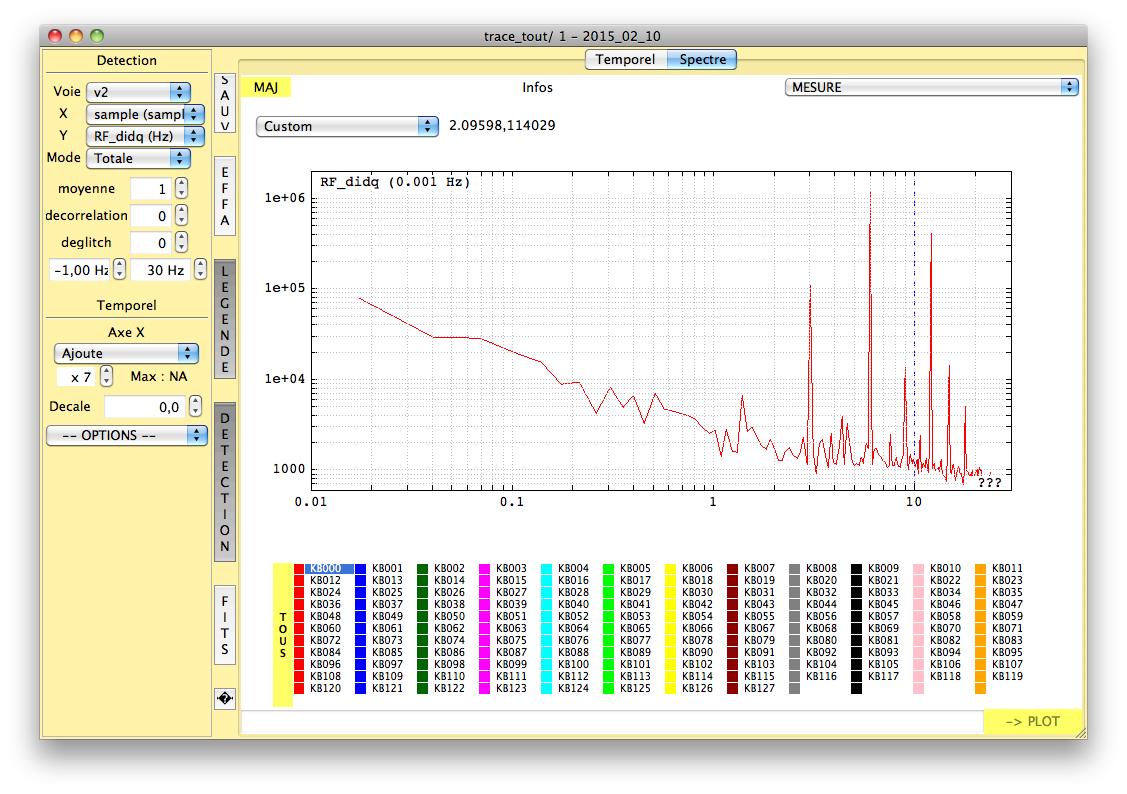
Spectrum of the signal with the cryostat window open, without the plate.
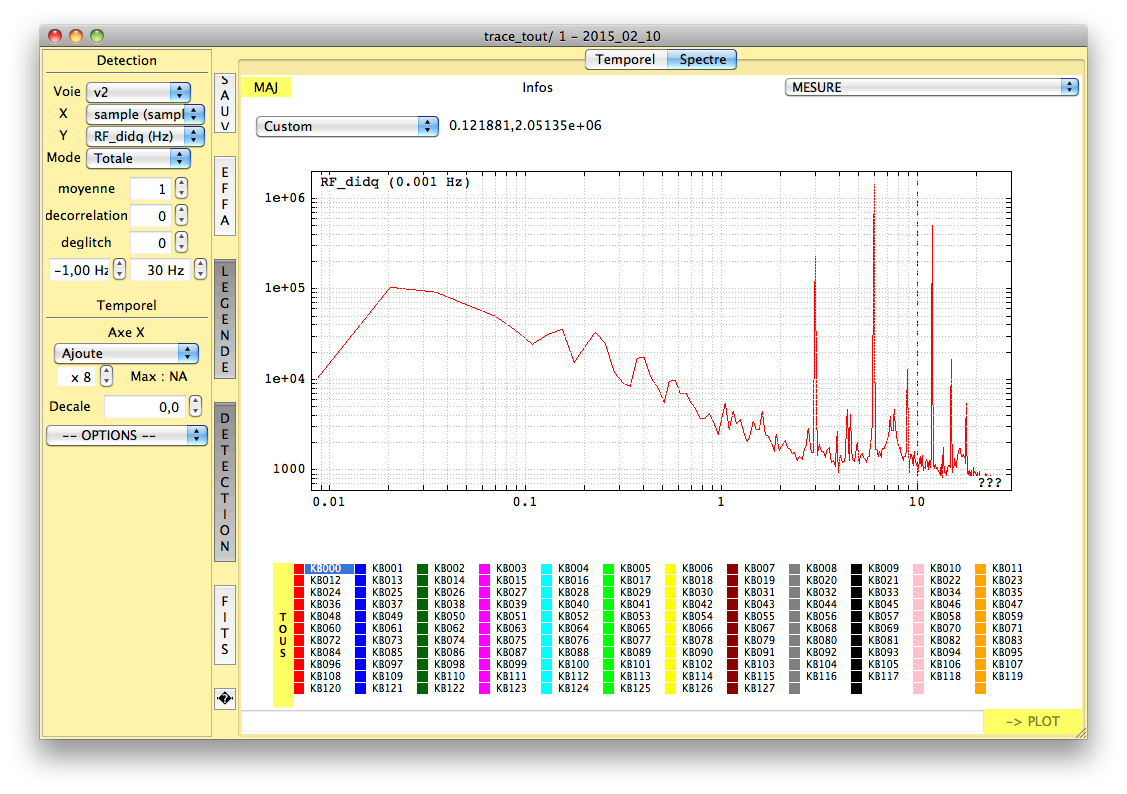
Spectrum of the signal with the cryostat window open and the plate.
We conclude:
1) The stray signal is small but present. The residual signal is few per cent at 1xOmega, much less for the others armonics.
2) Very small differences with the plate or without the plate.
We Decide to keep the configuration without the plate for the rest of the observing campaign.
The mechanical rotational frequency is 2.98 Hz, The acquisition frequency is 47.68 Hz. This means 4 indipendent points per HWP tour.
19h. We should start at 22h. From 18h to 22h XPOL is observing the same source (Quasars) we have planned to observe this night. The wheather is really bad (opacity between 0.4-0.5). Hoping is getting better for the night.
23h. We are observing with the HWP and WG. The opacity is still high (about 0.4). Here is the spectra for the two arrays.
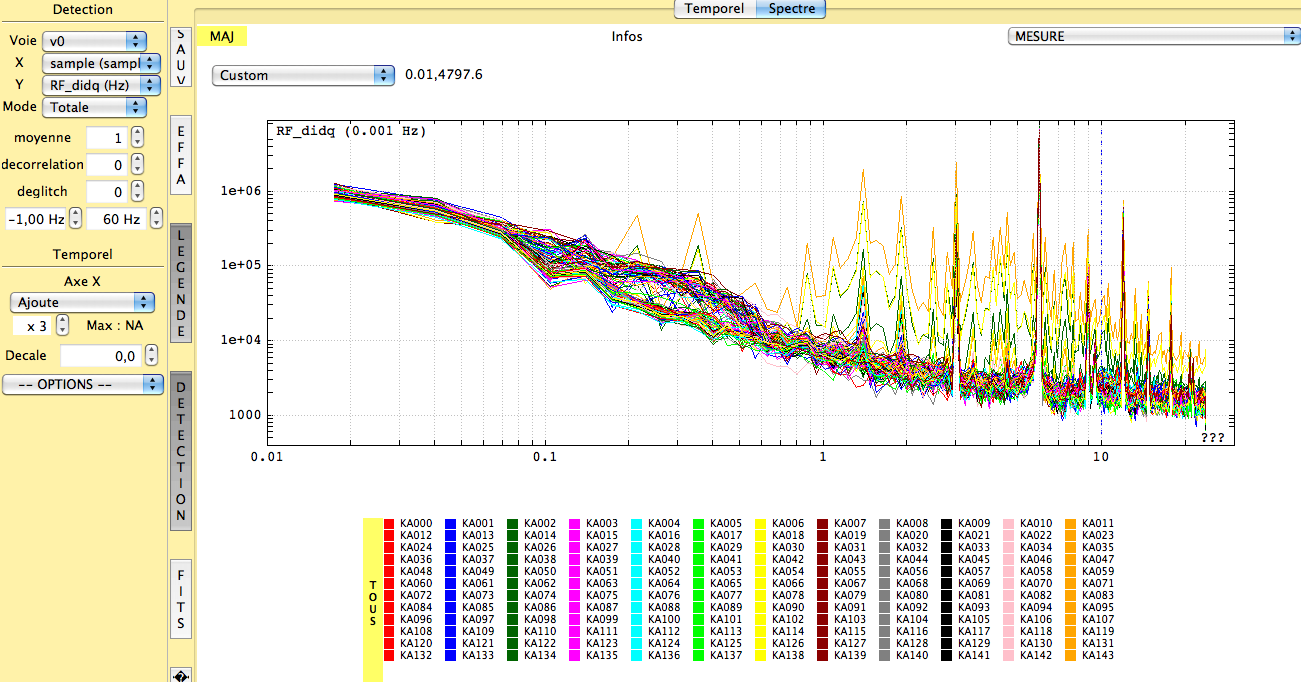

February 11th 2015
02h. Observations of several quasars. Observation of Jupiter (see figure below).
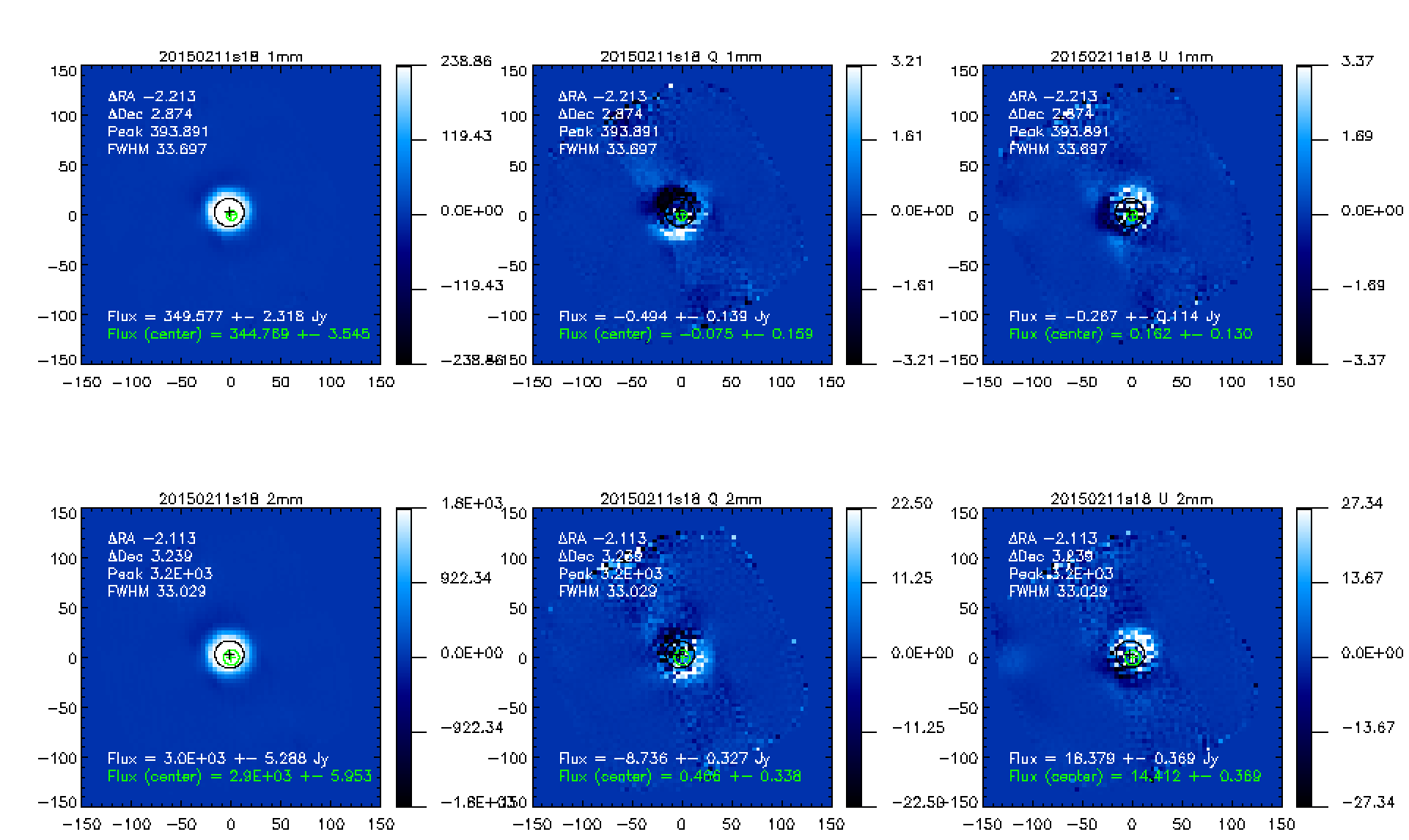
If we consider Jupiter as a non-polarised source the instrumental polarisation is 1.2%
18h. Observations started. Opacity is high (0.5). We started with Uranus. Then Crab nebula is planned.
21h. Observations stopped because of the snow.
February 12th 2015
Here the Uranus map at 2mm integrated on few scans at high elevation. We see two lobes of unknown origin but seen also by XPol. On the bottom the map at low elevation, the angle of polarization rotate, as expected if due to the instrumental polarisation. Xpol observed this effect at about 1% level. They explain this as an effect of the mirrors inside the cabin. This could explain why we observed the same behaviour even if not exactly at the same level. Another possible explanation could be the corrugated lenses in the cryostat. We need a detailed discussion on this subject in particular for NIKA2.
2mm Channel
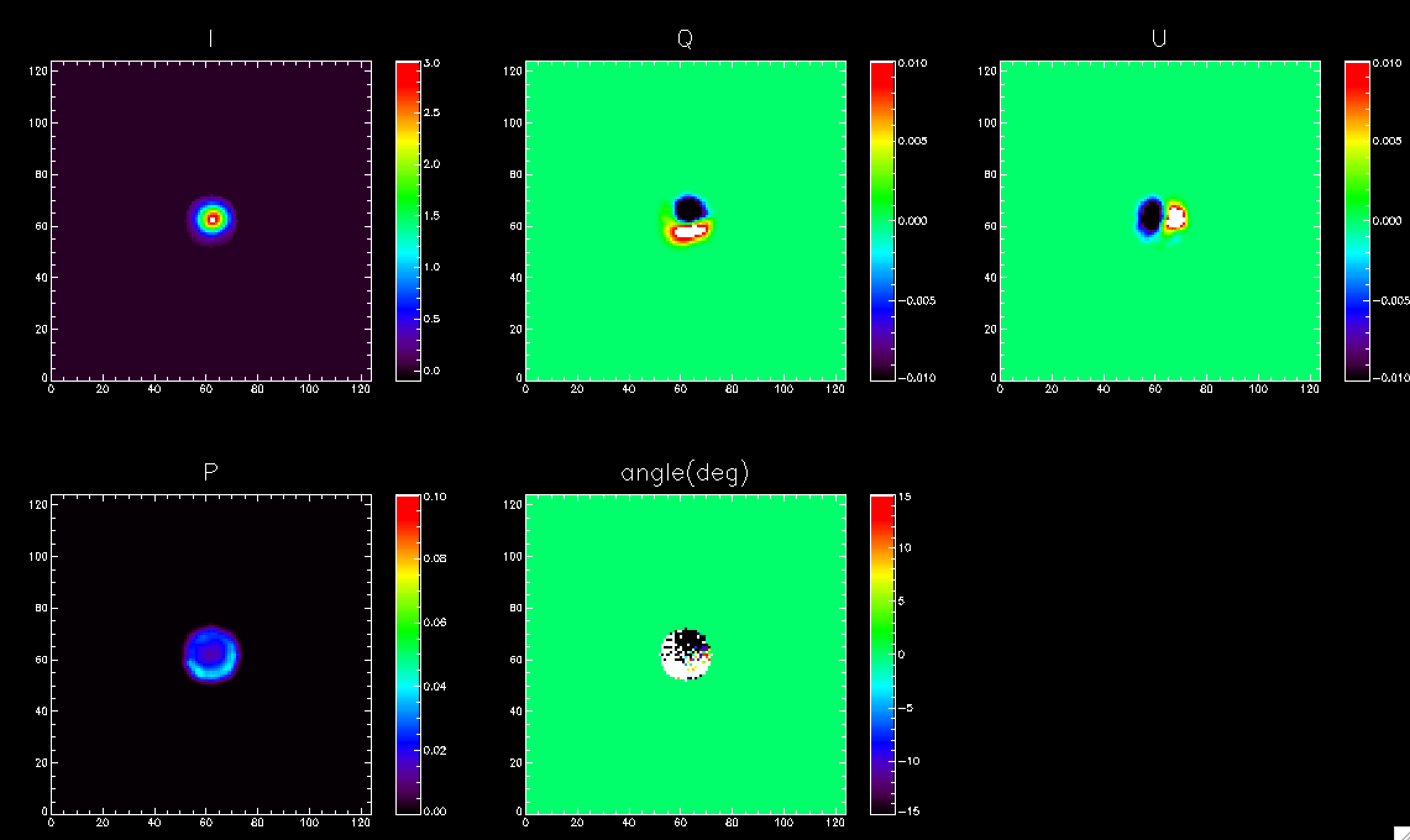

We started observations at 18h with very bad whether. It lasted almost 4 hours then the opacity started to decrease. In the first 4 hours we observed Uranus, making focus, pointings and geometries. Then we switched to the CRAB nebula.
February 13th 2015
10h. Vincent leaved, Anael arrived.
FIRST DETECTION OF THE CRAB NEBULA POLARISATION AT 1MM AND 2MM!!!
This map is produced using 11 scan 8 X 6 arcmin. We applied a first quick calibration (opacity correction is done - at 1mm channel it goes from 0.3 to 0.15)
1mm Channel 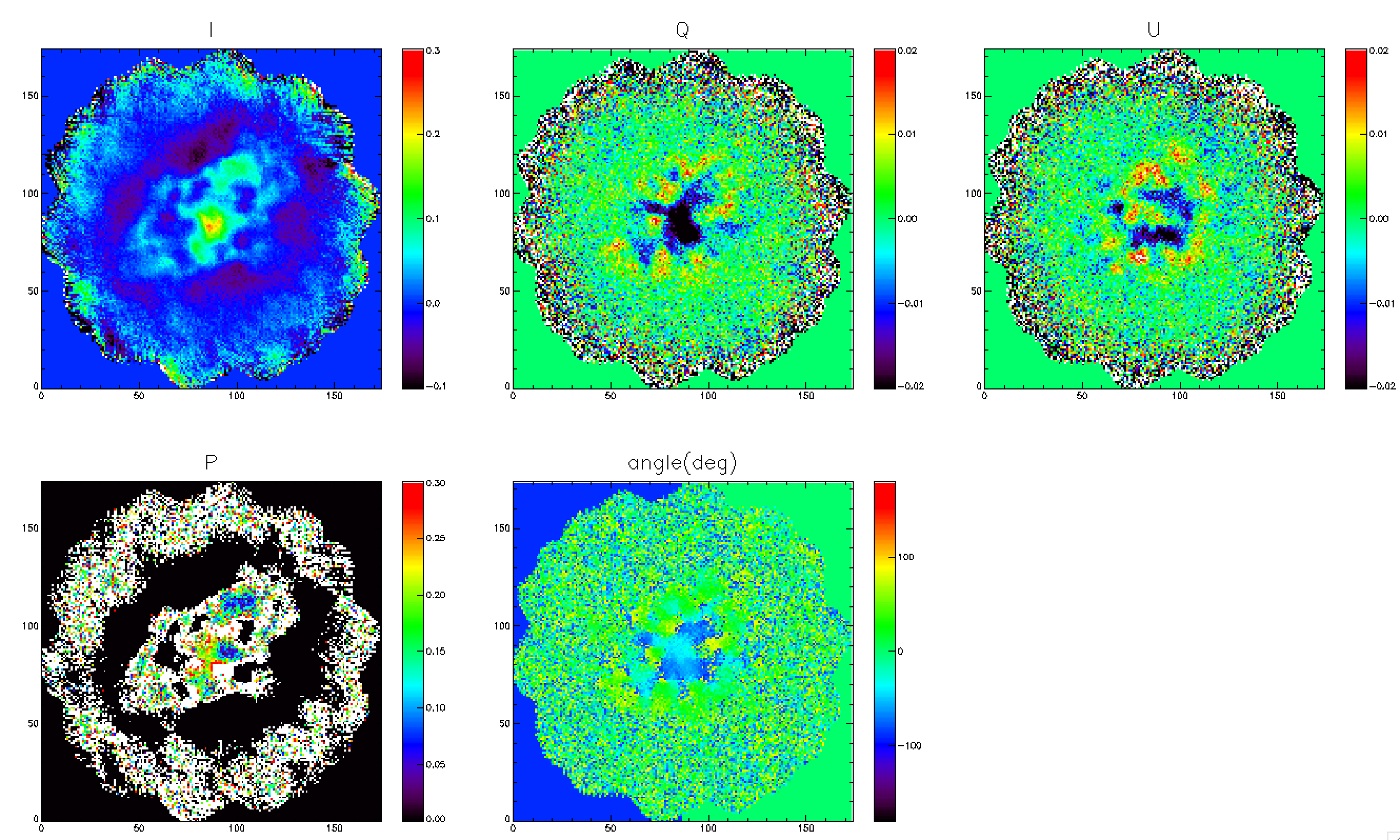
2mm Channel 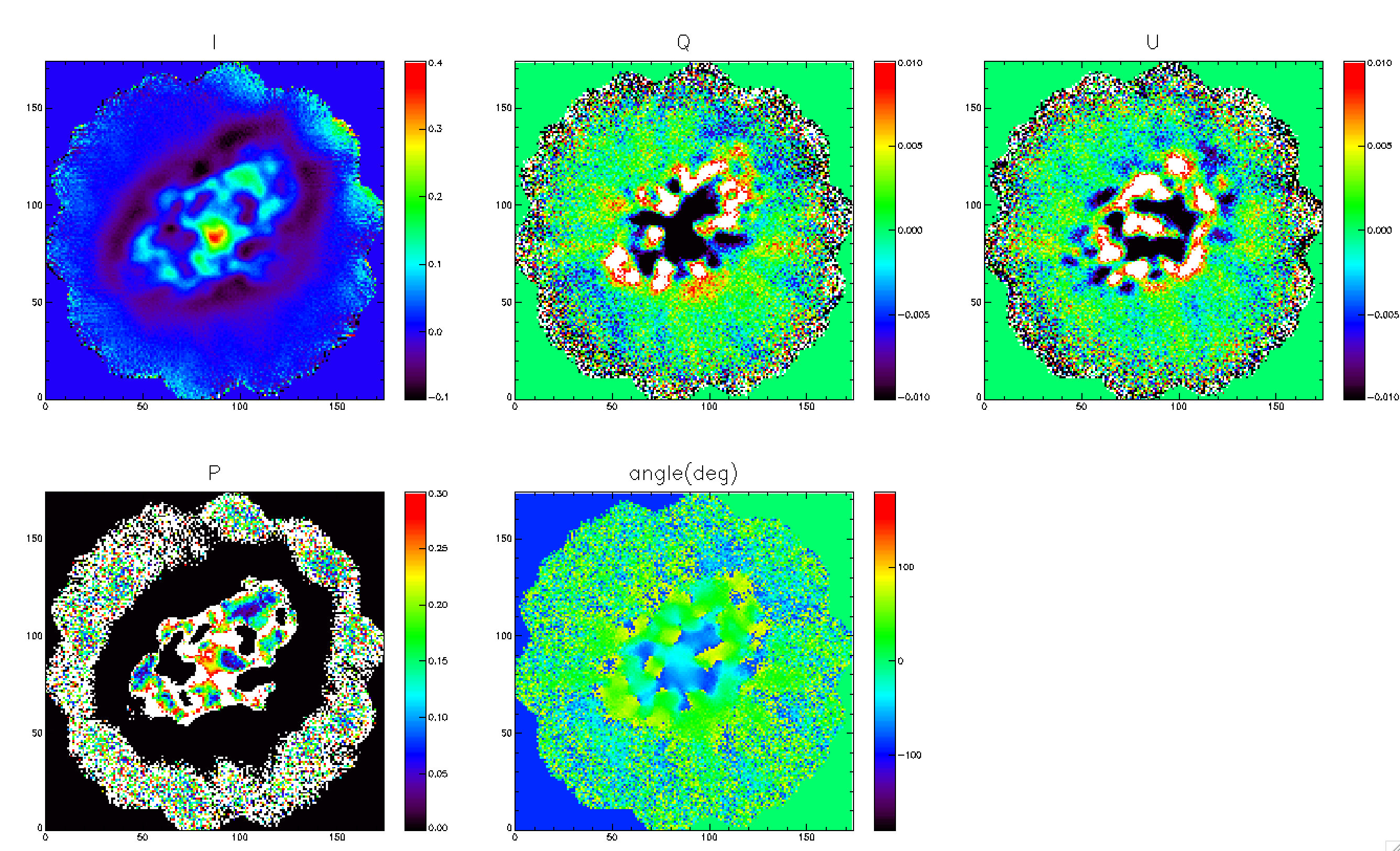
Slightly improved processing (still preliminary !)
1mm Channel 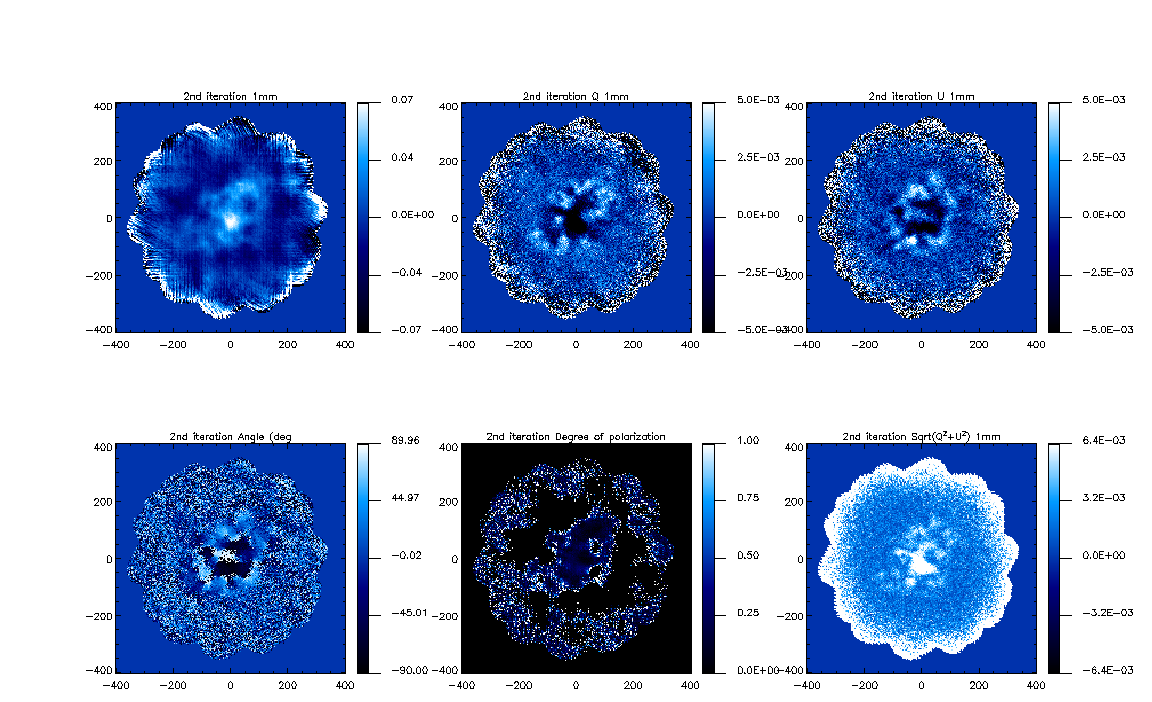
2mm Channel 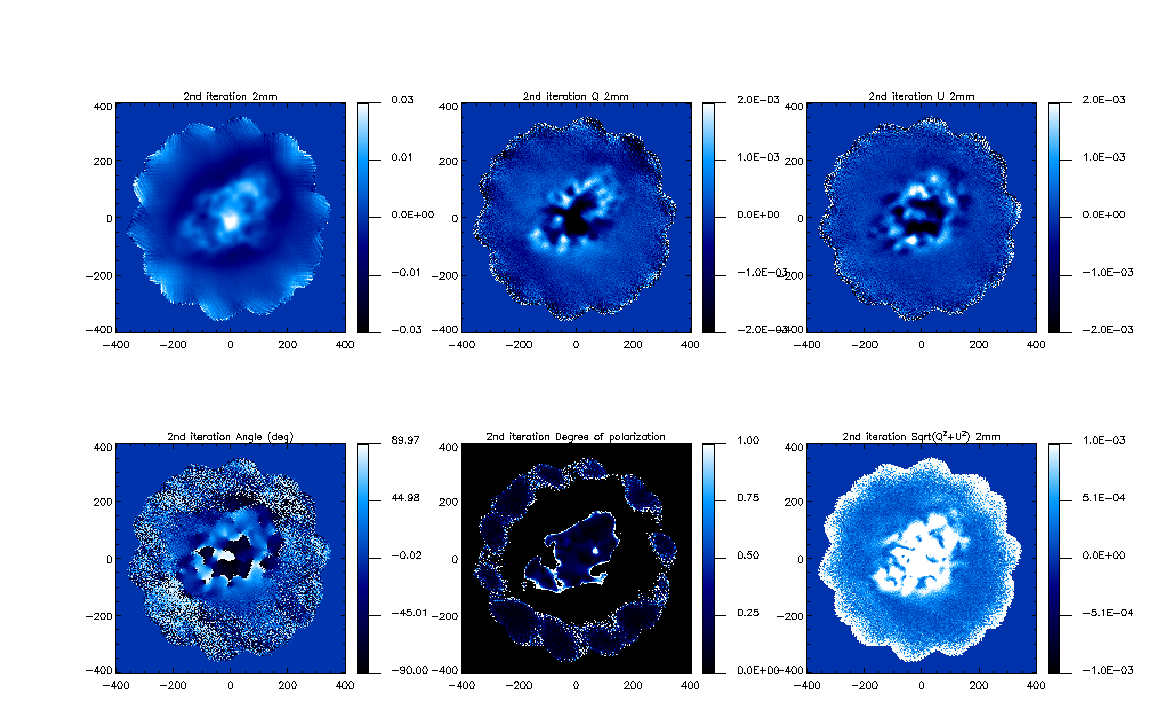
February 14th 2015
Observations as planned. Orion, CigA, Crab and several Quasars.
FIRST DETECTION OF THE CygnusA POLARISATION AT 1MM AND 2MM!!!
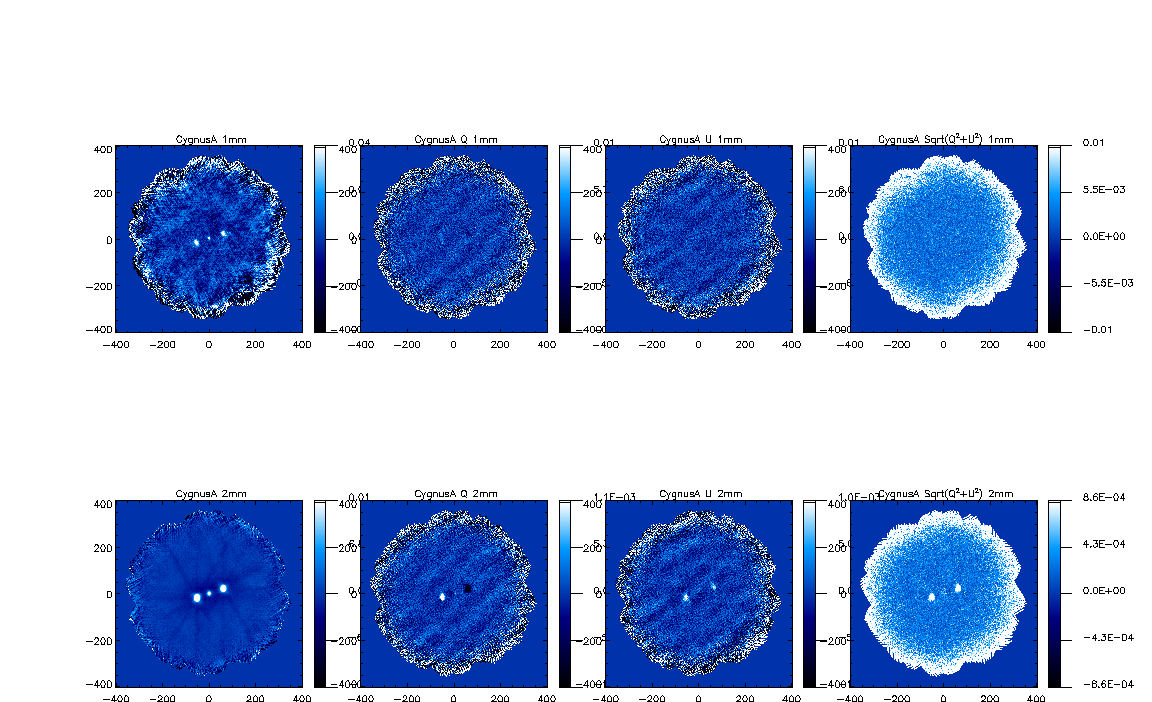
February 15th 2015
No observation because of the snow.
February 16th 2015
Calibration done!
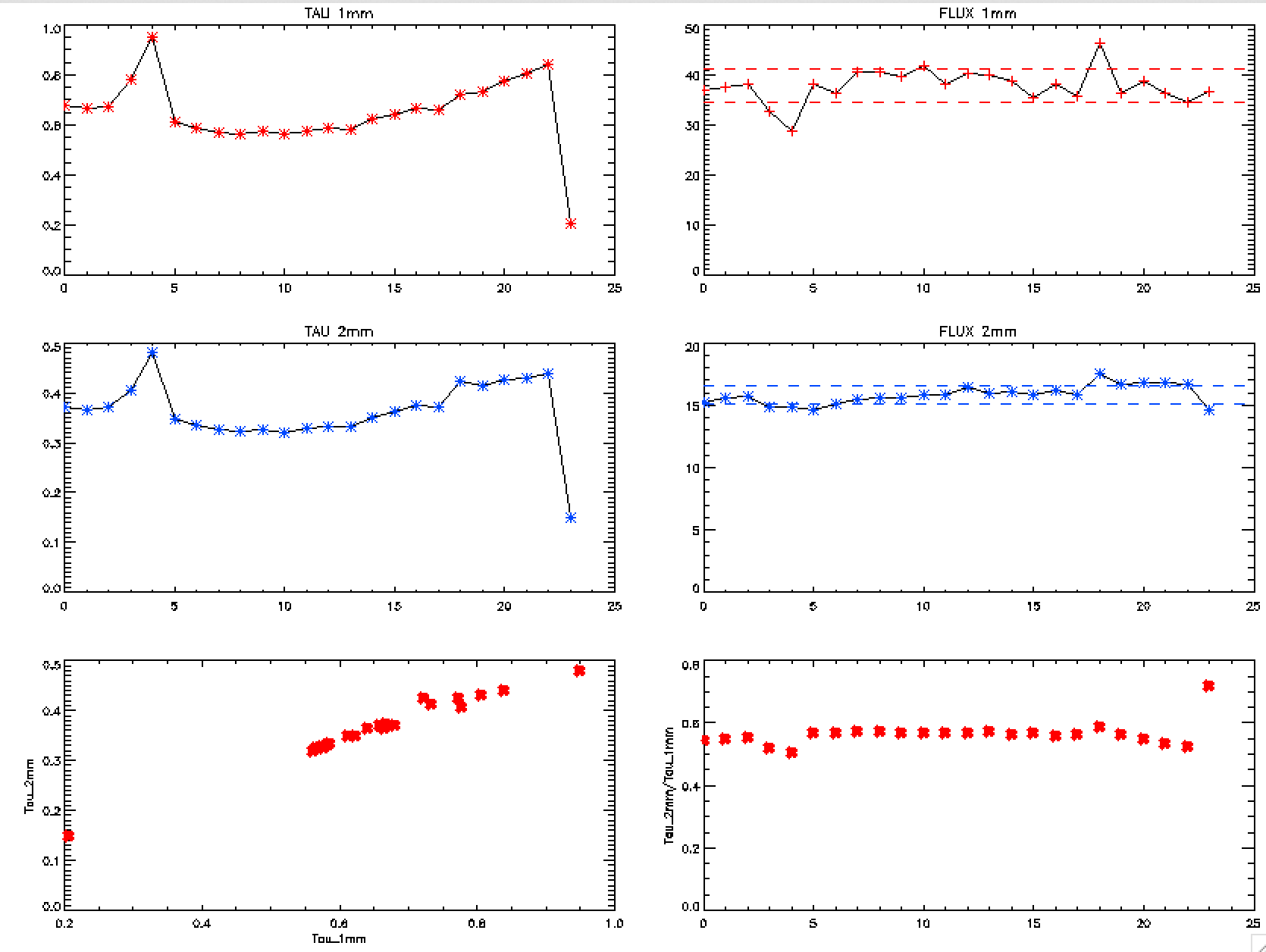
Observations of Uranus during the observing campaign. The range of variation of the opacity is big (for 1mm from 0.2 to 0.9).
Horizontal lines correspond to mean(flux)+1*sigma and mean(flux)-1*sigma with:
sigma_1mm=8.1%
sigma_2mm=4.5%
00h. We should start observations now, but we decided to give 2 hours to XPOL to be able to cross-calibrate polarisation.
02h. Start Wollaston prism session. We planned to do a three hours session observing quasars and M87.
05h15m: we observe M87 with the polariser and few quasars for calibration until the end of the session.
11h30m. One hounr and half bonus to observe mars at different elevation.
17h. One more hour to have Orion observation at different elevation. We got just one Orion map because a technical problem on acquisition appeared.
February 16th 2015
We started at 01h. Observations of NGC2264C, M87 and few quasars.
05h. OBSERVING CAMPAIGN ENDED. WE GOT POLARISATION WITH NIKA!!!
February 17th 2015
BYE BYE NIKA-1
